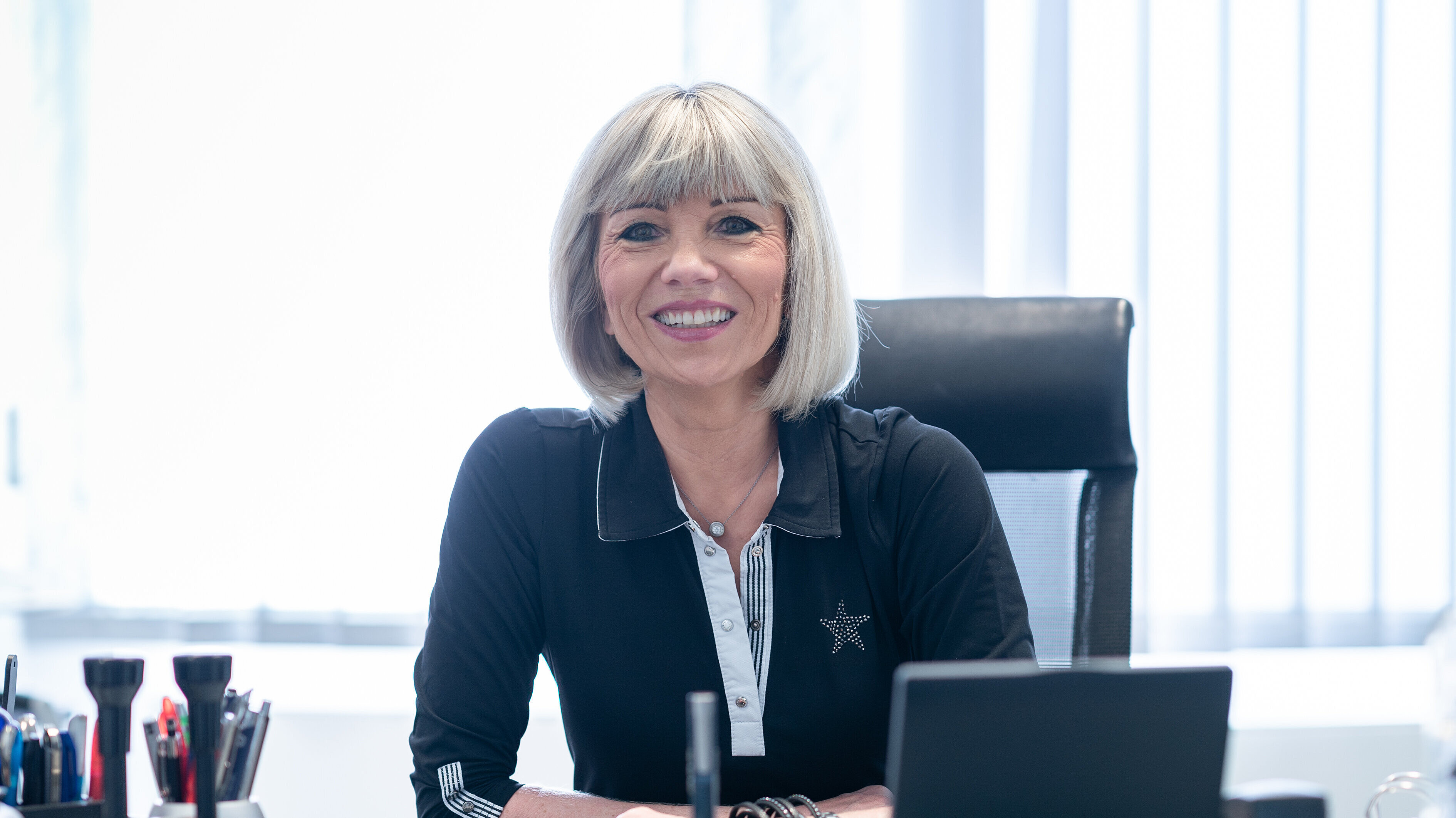Cochlear implant with Freudenberg Group medical technology enables Sieglinde Wetterauer to hear
“You are talking to a woman who is deaf. But I can hear and understand you. Isn’t that amazing?” says Sieglinde Wetterauer, smiling. She stares intently at the person sitting opposite who just began to speak. The woman with the blonde bob is wearing cochlear implants – and if no-one knew, they could never tell. “Using a cochlear implant is like reading a text with missing words – the brain fills in the gaps. But it takes much more effort and needs practice,” says Wetterauer. In Germany, some 40,000 people wear a cochlear implant, and the number is rising. The Freudenberg Group’s innovative medical technology makes this possible. “The increased longevity of people combined with growth in the world’s population will impact the health market long-term,” says Dr. Mohsen Sohi, Freudenberg Group CEO. “We can make a valuable contribution here because our materials expertise and product solutions are in demand in this market.”
The Freudenberg Medical Business Group is the first manufacturer to use the so-called HelixMicro technology for precision liquid silicone molding. “HelixMicro technology allows us to produce micro implants weighing less than 0.001 grams. We can extrude tubes with diameters as small as 0.2 millimeters, too,” says René Heilmann, Freudenberg Medical Head of Marketing. Freudenberg components also fix an implant’s individual parts in place and seal the prosthesis.
Wetterauer had hearing difficulties even as a child; as an adult, she suffered significant hearing loss twice within a year. As a result, she lost her hearing in both ears and went through a personal crisis. She could no longer hear the splash of the morning shower; even the hairdryer fell silent. “I was really scared about losing my friends and my job as personal assistant to the CEO of a media group, because I couldn’t hear or communicate,” she says, with a serious look on her face. “I had always defined myself by my abilities in our goal-driven society and had the feeling I couldn’t achieve anything anymore.” Today, her feet are firmly back under the table: she’s been working for the last 35 years and can even make phone calls with the help of additional technology. The device transmits the caller’s voice directly into her ear. “Making a phone call is still challenging; even whispering is like running a marathon,” says Wetterauer. “Out of tragedy, I’ve experienced a completely different world – a world of silence. I’ve made new friends; old friends are still there for me. There have been moments – when I haven’t understood everything – that I’ve wanted to withdraw. But now I have a new and important job: to raise awareness about hearing loss and help others who are affected.”
Cochlear implants made it possible for Wetterauer to return to some sense of normality. How do they work exactly? The human cochlea sits in the inner ear and functions as an internal microphone. In many hearing disorders, the cochlea stops working or only works to a limited extent. When hearing aids no longer help people understand the spoken word, cochlear implants can often do the trick, provided the auditory nerve is still intact. The implant is a prosthesis and is inserted into the cochlea to replace the inner ear. The device consists of a microphone, a transmitter, a speech processor and the implant itself with its electrodes. The microphone, transmitter and speech processor are worn externally behind the ear. The microphone captures incoming sound waves and transfers them to the speech processor. This converts the sound waves into electric pulses and sends them to the transmitter. From here, the signals are conveyed to the electrodes in the cochlea, which then stimulate the various sections of the auditory nerve. The nerve carries the stimulation patterns to the brain, where a complete auditory impression is created.
“After the first operation, I couldn’t immediately understand everything. The technology needed tweaking and I was faced with a steep learning curve. Noises sounded tinny and distorted; it was difficult to understand what I was hearing. I needed many hours of speech therapy and training,” says Wetterauer. Following the operations, Wetterauer’s sister read her adult fairy tales, which she then had to retell. This also helped train her listening skills. “When it’s quiet, it’s easier than when I’m at an event surrounded by many people. If I can see my counterpart’s mouth and he speaks slowly and clearly, it works better. It’s difficult to distinguish similar sounds.” Wetterauer often speaks of “we” because she is an ambassador from the world of silence; she wants to explain the silent world to people who can hear. She also deals quite openly with the issue at work and even adds the phrase “.... listening by cochlear implant” to her emails.
Since 2013, Wetterauer, who lives with her husband in Bad Dürkheim, Germany, has been running the self-help group, Cochlear Implant Neustadt-Pfalz and passing on her experience. She has organized lectures with experts on additional techniques and learning to hear again, arranged a patient day and launched a charity art calendar on hearing loss with the Mannheim photographer Nicole Simon. This year, music therapy is planned, as listening to music with implants is very difficult for many people affected, and severely limits them in everyday life. "The best moments for me are when people who cannot hear, and who have completely withdrawn from life, blossom again through contacts with like-minded people and constructive support, and become pro-active themselves," says Wetterauer.
